Too hot to cook? Try a cold bowl of soup: Jasmine Mangalaseril
Cold soups make for a hydrating, refreshing and tasty way to stay nourished during heat waves
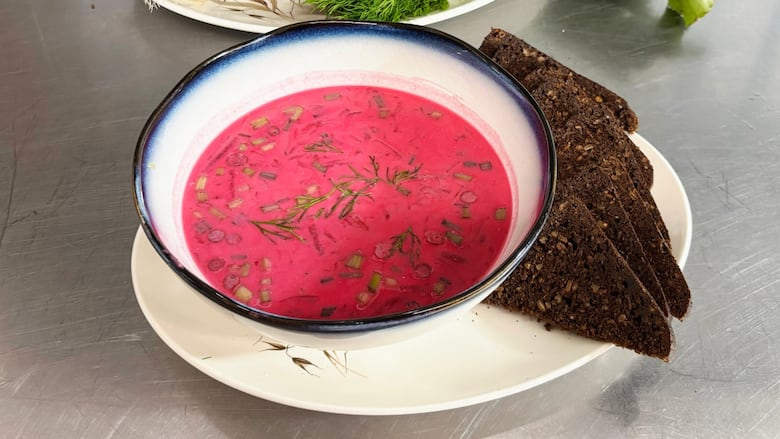
Hot summer days and nights are perfect for crisp salads and mezze-like platters where we pick at fresh fruits and vegetables, dips, and cold, cooked meats.
It's also the perfect weather for cold soups.
When the temperatures rise, staying hydrated is key. And one way to replenish fluids and nutrients is to have fruits and vegetables with high water content, like tomatoes, berries, melons and cucumbers.
Luckily, cold soups can keep us hydrated and nourished in many tasty ways.
Some are low cook. Others are no cook. But all of these can stay in your fridge for a couple of days. Just pour and sip for a bit of instant rejuvenation when the weather makes you wilt.
Holodnik and Okroshka
While a steaming hot bowl of borsht is familiar when the snow falls, its cold cousin, holodnik, is perfect under the beating sun.
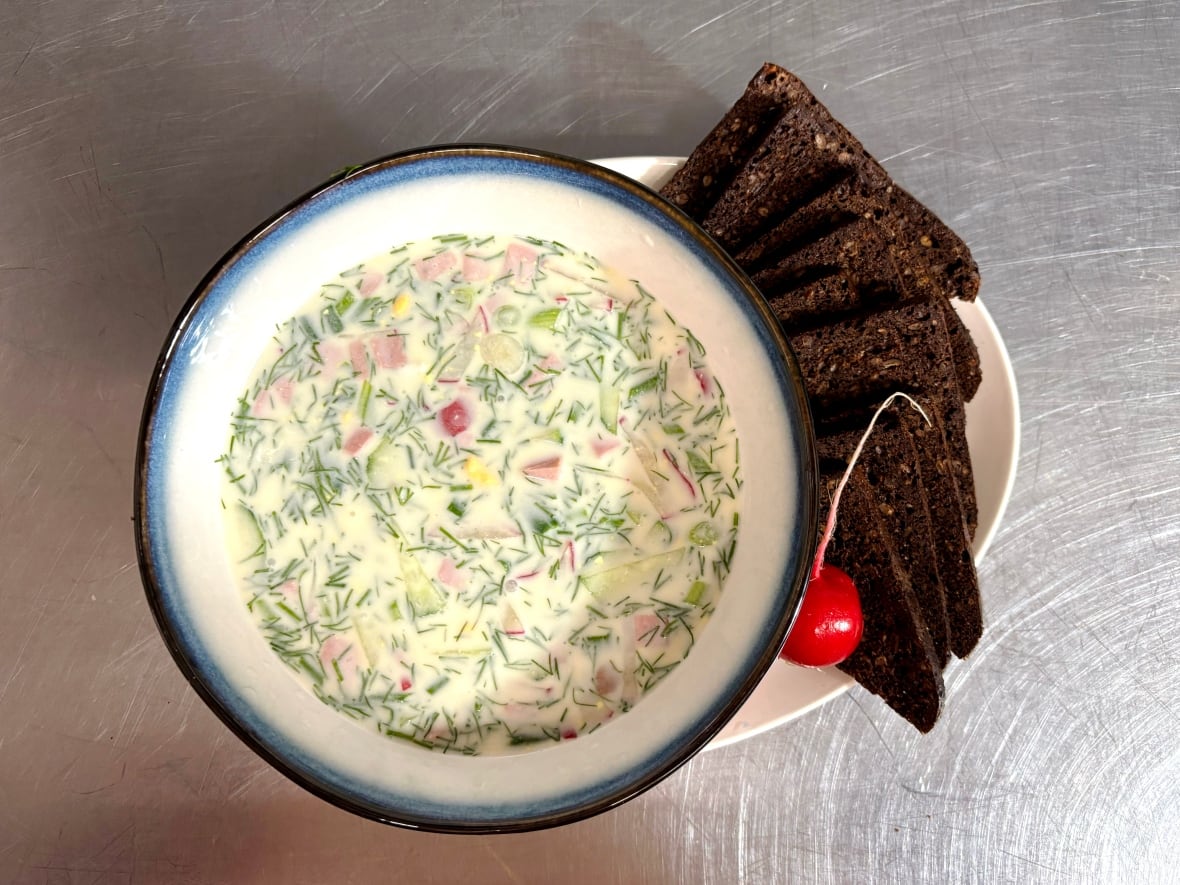
"Holodnik is more popular in the western and northern part of Ukraine," said Nataliia Khimka, owner of Kitchener's Eastern European Cuisine Zupa.
Khimka mixes cooked, cooled beets and fresh cucumber with water mixed with kefir and sour cream. There's a good amount of chopped dill and it can include lemon juice or mustard.
The fuchsia pink, tangy, slightly earthy soup is garnished with hard boiled eggs and sliced green onions. It's traditionally served with slices of dark rye bread.
Khimka said okroshka is another popular summertime soup in her homeland.
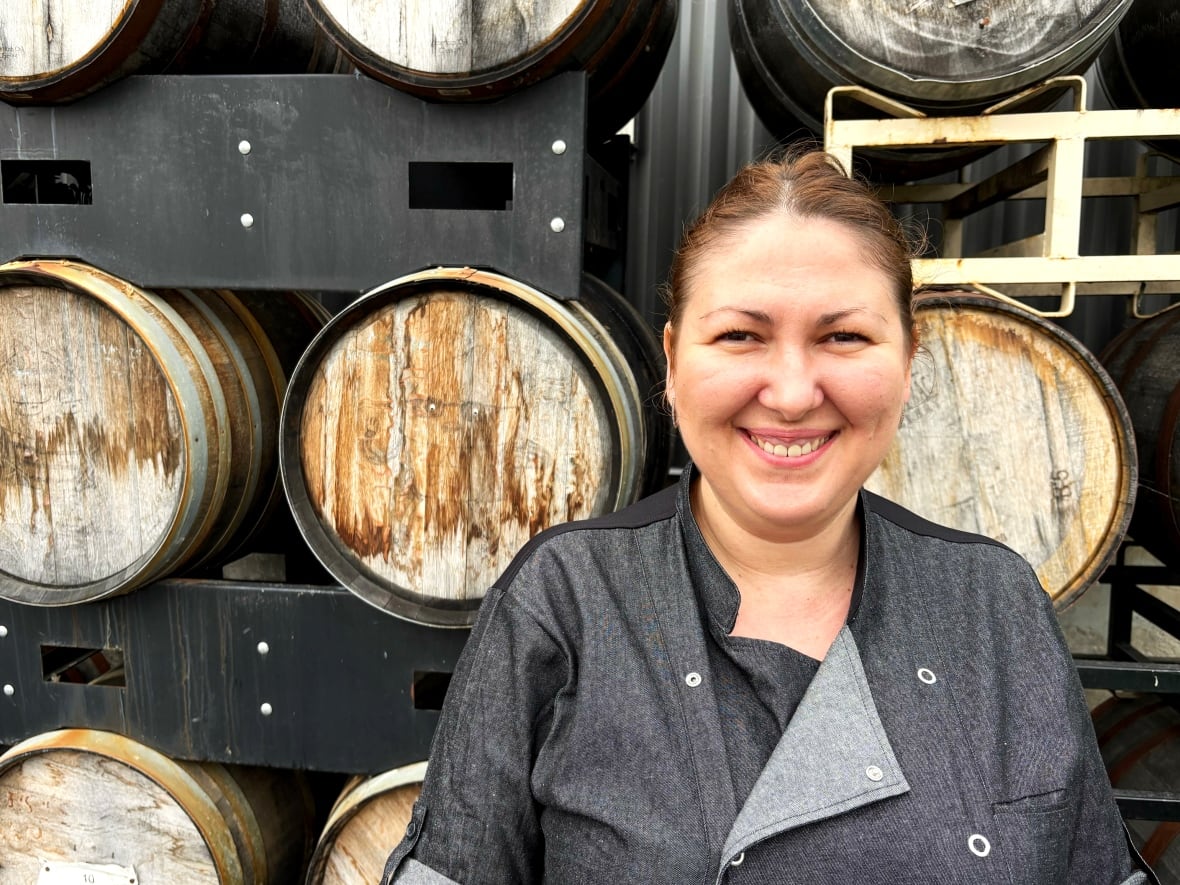
It's made with chopped cooked potatoes, hard boiled eggs, radish, cucumber and fresh herbs, as well as cold cooked meats like chicken or ham, or cured sausage.
"You can leave it in the fridge," Khimka explained. "And then when you want to eat, you can have it two ways: add kefir or ayran [a salty yoghurt drink], or add kvass [a low-alcohol, fermented grain beverage]…for me, it's better with ayran. It's more tasty."
Naengmyeon
At the height of summer, many Koreans reach for naengmyeon, a cold noodle dish with a light broth.
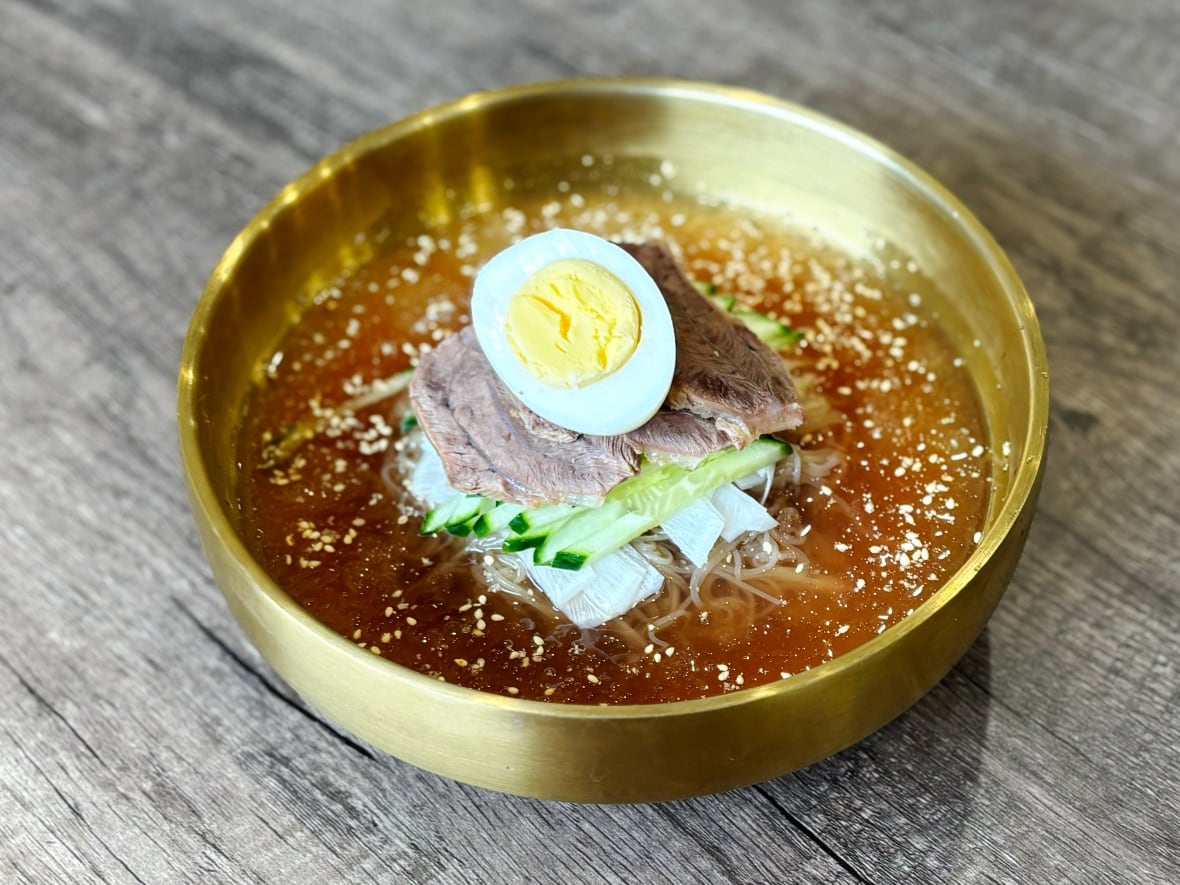
"Naengmyeon was originally a winter food, because ice was traditionally available in the winter, but now, as time has passed it has become a food that can be eaten cold in hot weather," explained Na Yeon Koo, who with her husband Taewon Kim own KW Korean BBQ Restaurant in downtown Kitchener.
Naengmyeon (raengmyŏn in North Korea) is sometimes seen on Korean restaurant menus as "cold noodles."
At KW Korean BBQ, thinly sliced cucumbers, Asian pear, a halved hard boiled egg and slices of boiled beef top a mound of cooked and cooled thin noodles. In its metal bowl, it's surrounded by a refreshing, tangy, sweet icy broth. For those liking a bit of chili heat, a sweet and pungent sauce can be mixed into the dish.
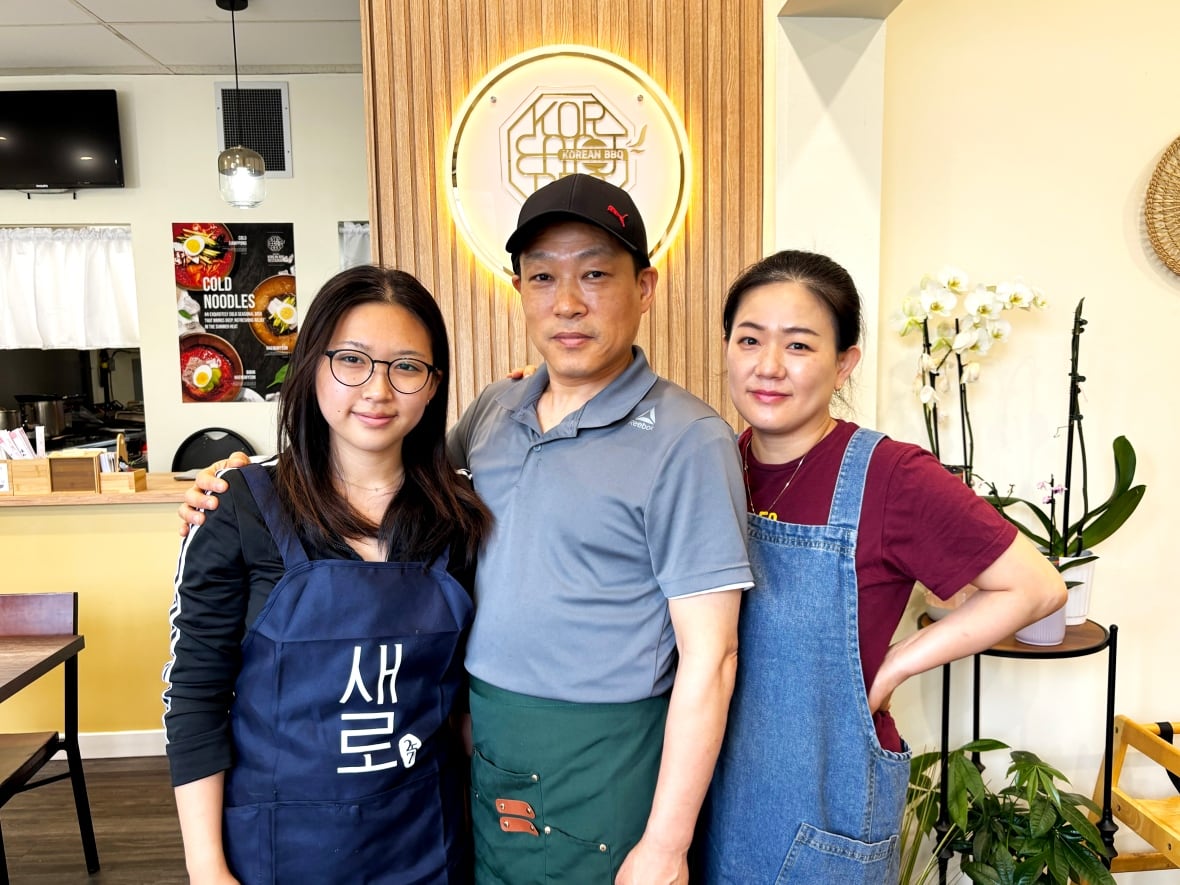
"That soup [is made with] beef shank, apple, pears, and then cabbage, green onion, and radishes and carrots," said Koo. "[After straining] we freeze and thaw it. Then we put some sugar, salt, vinegar, to give it the naengmyeon taste."
Gazpacho and Salmorejo
Vanessa Stankiewicz, who co-owns Kitchener's La Lola Tapas Bar, said gazpacho is nourishing in extreme heat. It's also economical because it's one of the foods that make up comidas de aprovechamiento.
"Aprovechamiento means 'to use up'," said Stankiewicz. "Pear tomatoes would probably start to almost go off, very soft, tender. And hard bread and things that you had laying in the pantry at that time of the year."
It's a cold purée of pear tomatoes, cucumber, long green pepper, onions, bread, olive oil and sherry vinegar, perhaps loosened with some water.
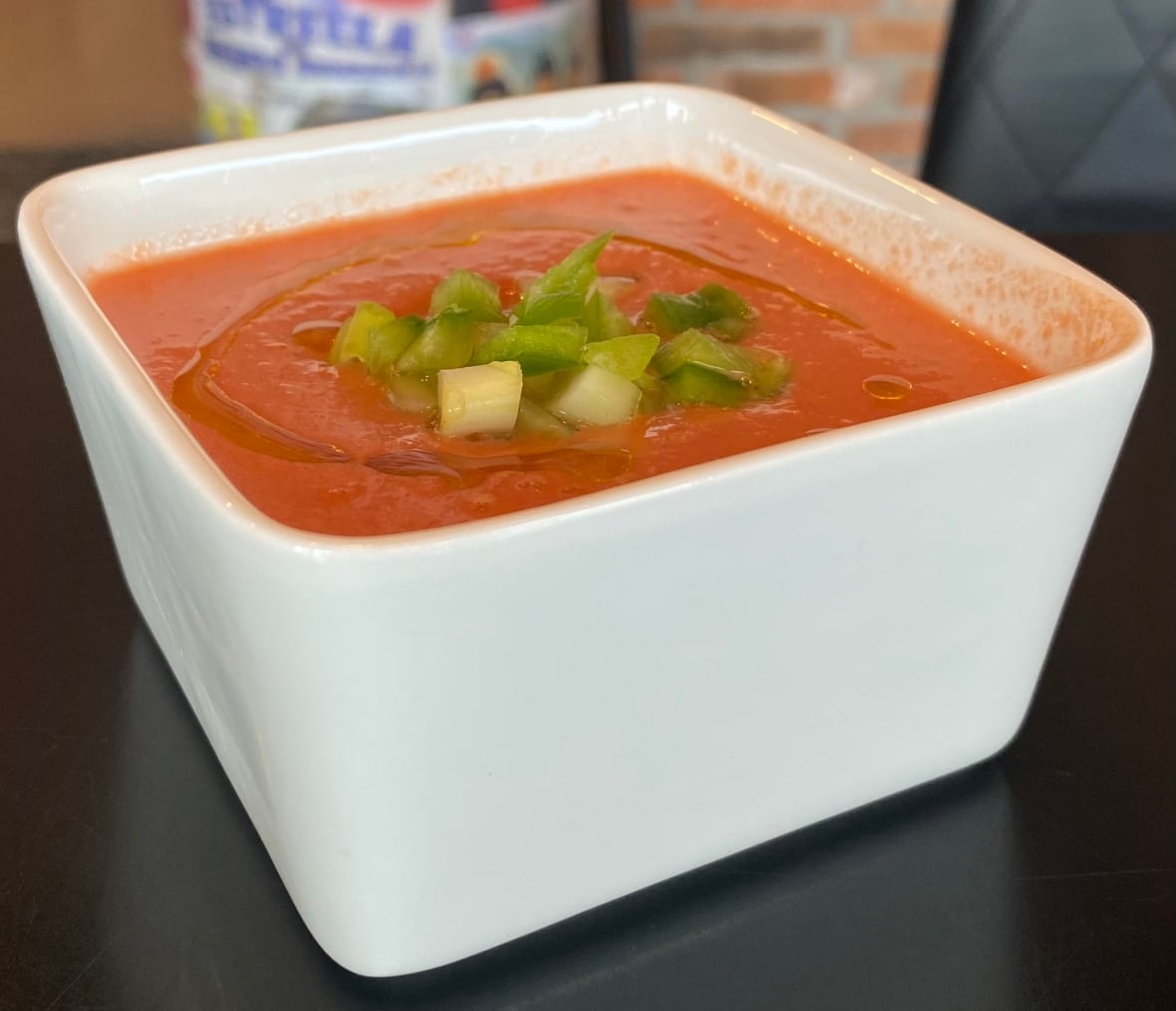
It's a soup here, but in Spain, gazpacho is often drunk as an apératif to open up the appetite.
A similar but different cold dish called salmorejo is also enjoyed in parts of Spain. It's a thick emulsified puree of pear tomatoes, garlic, bread and oil. Rather than being sipped from a glass it's eaten as a tapa.
"You will see people eating it with a spoon. You'll see people dipping bread into it and eating it," said Stankiewicz. "It's absolutely divine and it's one of my favourite summer dishes to eat."

